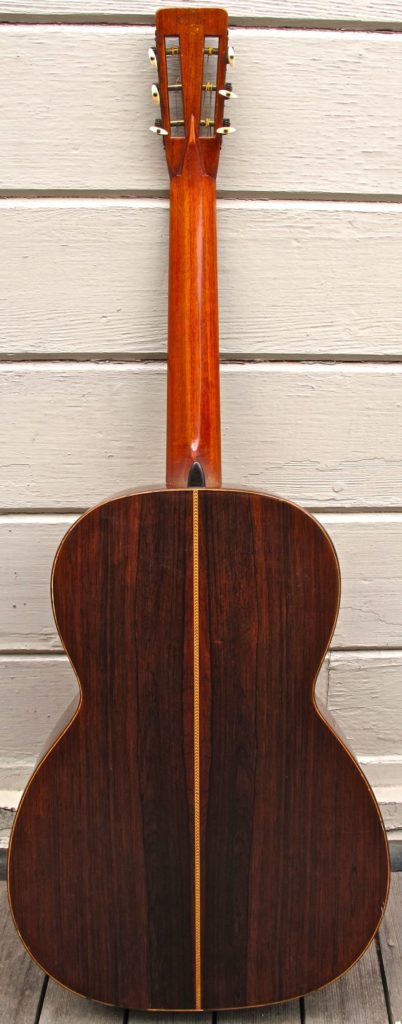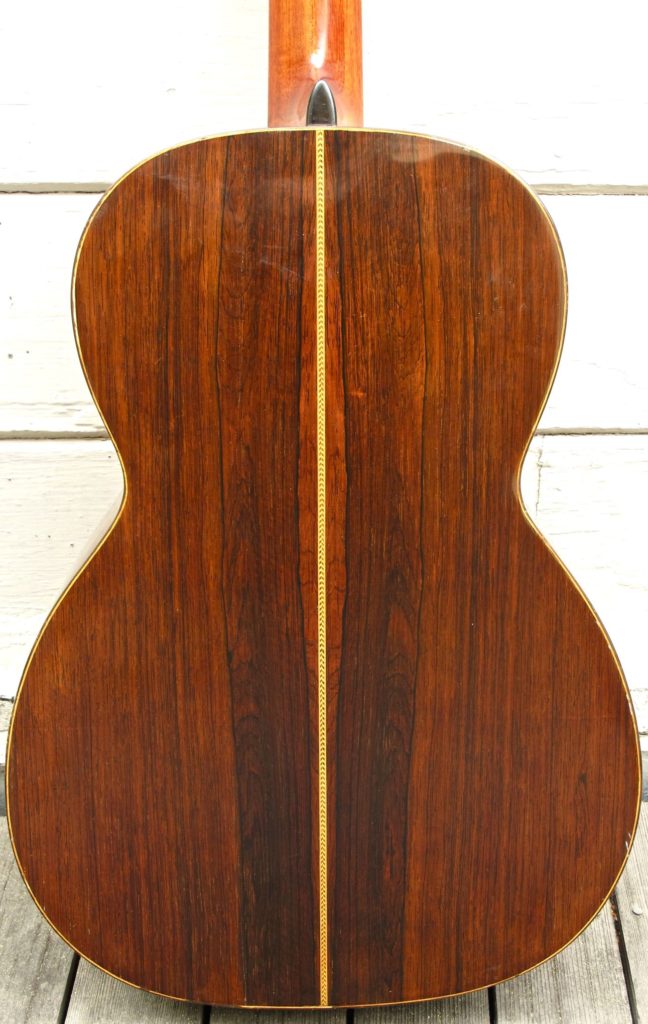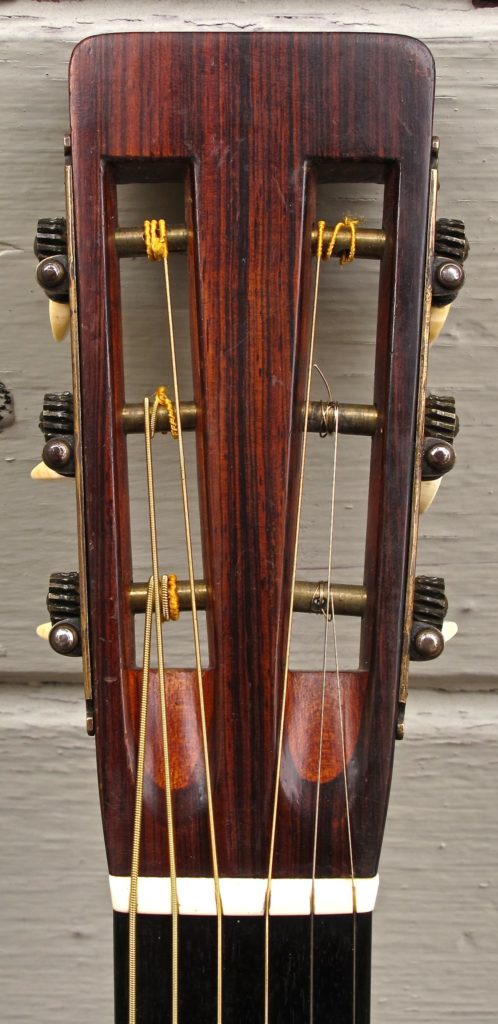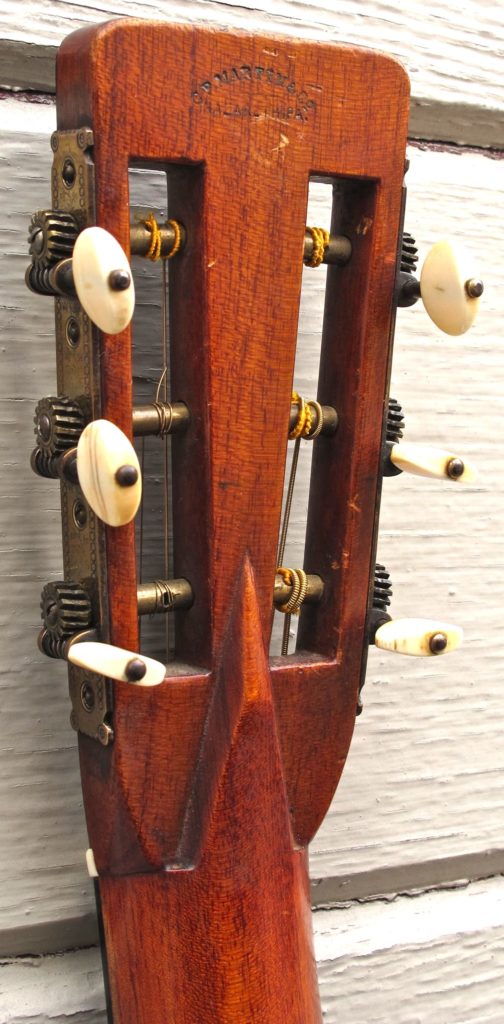The first documented 000 size guitar was this 000-21 shipped to Henry Spahr on November 7, 1901.

This guitar was discovered by Eric Schoenberg about 35 years ago. The top was in very poor condition. Dana Bourgeois attempted to save the severely thinned top but it eventually had to be replaced by TJ Thompson to make it playable. The original top, fortunately, was kept with the guitar and was used as the pattern for the replacement top. The top was dated “Jan. 28, 1901” in pencil under the top. The letters “H.L.K.” are also rubber stamped under the top indicating the Martin employee (Harry L. Keller) was given the task of building this custom instrument.
Although the top is dated January 28, 1901 the guitar was not delivered, or in this case picked up at the factory, until November 7. This is a surprisingly large amount of time as Martin was able produce a guitar in as little as 3 or 4 week during this period. Possibly Martin used the extra time to manufacture forms and otherwise work out the details of the new design. If forms were being produced it would seem to indicate Martin was intending to add the larger 000 size to the line.
Befitting its status as the 000 prototype this guitar displays a number of unusual features. The scale length 24-¾” is slightly shorter than the 25.4” scale found on most 000s. The lower bout measures very close to 15”, the normal specification for 000 size Martins, but the upper bout measures almost 11” or close to ¼” wider than normal. The body is also 1/8” deeper and the body shape is slightly different than later 12 fret 000 size instruments.
The guitar was ordered by teacher/dealer Henry Spahr of Jersey City NJ. Spahr had organized a guitar and mandolin club so he may have been looking for a guitar with a larger volume although we will never know how he convinced Martin to actually produce the larger bodied guitar.
The guitar has 20 frets instead of the more usual 19 frets seen on early 000 size guitars. The professional guitarist William Foden, in 1900, had started specifying 20 frets on the Martin guitars he purchased. Spahr may have been aware of his development and requested the same feature for his guitar. However, judging by the other early 000s examined, Spahr reverted to the 19 fret guitars for subsequent orders.
It is quite clear that Spahr was a driving force in the development of the 000 size Martins . Spahr purchased 13 of the early 000 Martins between 1901 and 1911, almost certainly for his students and music club.
As is sometimes encountered in Martin guitars of this vintage, the serial number is stamped in the end of the head stock. Interestingly a “H. SPAHR/J. C.” stamp appears above the serial number (the “J. C.” stands for Jersey City, the location of Henry Spahr’s business).
The tuners seem to be Seidel tuners (possibly style #5). Although the style 21 guitar only rated brass tuners Henry Spahr quite often upgraded the machines on these early 000-size guitar to German silver.
See also 1905 Martin 000-21 (serial number 10009) on this website.
Back and sides: Brazilian rosewood
Top: Red spruce (Adirondack)-the replacement top is also red spruce
Photos (and most of the story above) courtesy of Eric Schoenberg








